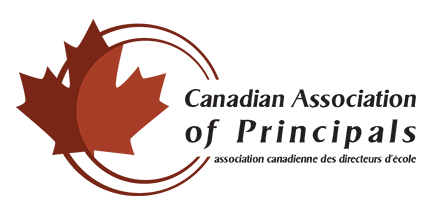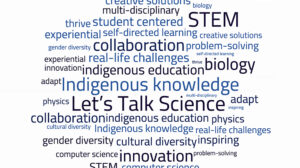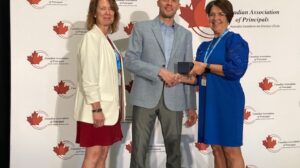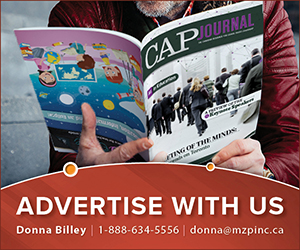Reflection is powerful and an often-overlooked practice with potential to impact personal and professional development. When integrated within school leadership initiatives it’s a critical tool in shaping institutional culture, teaching practices, and student outcomes. Within K-12, reflective practice is well appreciated. Its value within experiential learning, high school co-op and work-integrated learning programs is growing rapidly. As conversations about personalized learning, the need for future-ready skills, and innovative learning solutions (World Economic Forum, July 2023) accelerate, reflective practice offers muscle to an educational leader’s toolkit.
Principals and their associates know the joy of teachers’ and students’ “ah ha” moments. The lift of one’s head, the eyes’ glare as it expands, or the “wow” statement coming from an insight, are all powerful clues of deep learning. These are the gifts of observing real learning. While years pass since Dewey suggested that “we learn not from experience… we learn from reflecting on experience,” the search for efficient and powerful tools to enhance learning rests heavily on principals.
Reflective Practice is Transformational
However practiced, the goal of reflection is transformation (Mezirow, 1997) with the intent to make meaning of experiences and to deepen understanding. Reflection helps convert impulsive action to intelligent action (Dewey, 1933). It can lead to new questions about current practices and assumptions before, during and after an experience.
Reflective practices help us evaluate our metacognitions by providing awareness of our thought processes and the patterns behind them. The outcome of reflective practice is improved problem solving, clarity around likes, dislikes and strengths, and knowledge which is in continual development. Reflection helps inform future actions and beliefs critical to leading schools, improving best practices, and student engagement.
Reflective Practice in Concrete Terms
Kolb (1984) connected reflective practice to successful experiential learning, and as adults we know the value of extracting meaningful elements from learning to incorporate them into a personal knowledge base. Without reflective time to purposefully debrief the experience, learning is less likely to become conscious or lasting.
Reflective practice can take place spontaneously when used to adapt to a current situation (Beard & Wilson, 2013). This is known as “reflection-in-action” (Schon, 1983). It can take place after an experience, known as “reflection-on-action,” usually as structured reflection (Schon, 1983). Others engage in “reflection-for-action” which takes place before an experience. Reflective practice occurs in a variety of teaching and learning contexts and its methods can be easily learned. CERIC’s research project from OneLifeTools offers the free Wayfinder Search Site which curates top resources and insights to create or improve reflective practice and expanding impact, especially related to formulating a learner’s next steps in education and career. Wayfinder is a collection of 312 resources in English and French which can be searched by type of resource, type of experiential learning, type of user, and type of student. Searching Wayfinder for K-12 learners provides 68 reflective practice resources.
When educators and students become more critically reflective of their own work, deeper learning occurs (Brookfield, 2021). Within single loop reflection it connects experience to theoretical knowledge using thoughtful retrospection without consideration of personal influences. Double-loop reflection focuses on challenging one’s role and contribution in learning environments while considering personal influences, beliefs, attitudes or actions (HEQCO, 2016). In either case, reflection must be critical, not simply descriptive, to be effective (McRae & Johnston, 2016).
Reflection can be extrinsically motivated and focused on external aspects of experience –referred to as surface-level reflection. Alternatively, it can be intrinsically motivated and applied to self and real-world context (HEQCO, 2016). Reflection can also take a hierarchical approach that considers different levels of cognition and familiarity with reflective practice on the part of both practitioner and learner.
Access and Apply Reflection Quickly
Busy leaders researching ways to introduce and accelerate reflective practice can explore the following powerful tools and insights to promote reflective practice.
- The Maker’s Audit & Guide (CERIC, 2022, found on Wayfinder site along with related Literature Search and Demo Video) is for anyone designing, implementing, or wanting to improve experiential learning. It provides 1) a series of questions and prompts for makers to integrate best practices into their experiential learning programs and 2) examples of reflective practice questions and prompts to use with learners to unlock career development value.
- A wide range of activities are used to facilitate reflection, including pre-experience and post-experience surveys, structured dialogue (e.g., mentor-to-mentee, class discussions, online chats), writing activities (e.g., worksheets, case studies, essays, journaling, question posing, narratives), acting (e.g., storytelling in front of audiences), visual arts (e.g., graphic designs, poster presentations, video clip productions), and behavioral modeling. The Wayfinder Search Site: Find Reflective Resources is a free digital tool (https://ceric.ca/wayfinder/ ) connecting activities with case studies that are replicable.
- Consider the DEAL Model for Critical Reflection (Ash & Clayton, 2004) when creating reflective prompts:
- Describe. Simply describe the experience. Example: Describe your Experiential Learning. Where was it? Who supervised it? What tasks did you do? Add a Career Development lens by asking about the jobs and careers observed in the workplace.
- Examine. Delve into what else led the learner into that experience. Add a Career Development lens by asking about individual career possibilities. Example: What were your career possibilities before the experience and how did they change?
- Articulate Learning. Transform experience into personal learning. Add a Career Development lens by asking how new skills and interests link to career possibilities. Example: If the learning objective was to gain employability skills, which skills did you develop? What new career possibilities come to mind building on those skills?
4. Explore Onelifetools.com for a set of narrative assessment and reflective tools to embed evidence-based practices into your programs and curriculum.
Reflective practice offers a powerful way for educational leaders to “nudge” the culture, add fuel to good teaching strategies and opens deeper insights to student learning outcomes. When rich experiences are connected to useful reflection on experience powerful things happen at a personal and learning outcome level.
References
Beard, C., & Wilson, J. P. (2013). Experiential learning: a handbook for education, training and coaching (3rd ed.) Kogan Page Publishers
Brookfield, S.D. (1995). Becoming a critically reflective teacher. Jossey-Bass. CERIC. (2022). Maker’s Audit & Guide. https://ceric.ca/?wpdmdl=53473&ind=1646069280570
Dewey, J. (1933). How we think: a restatement of the relation of reflective thinking to the educative process. D.C. Heath and Company
Higher Education Quality Council of Ontario (2016). A practical guide for work-integrated learning. Queen’s Printer for Ontario.
Kolb, D.A. (1984). Experiential learning: Experience as the source of learning and development. Englewood Cliffs, NJ. Prentice-Hall.
McRae, N., & Johnson, N. (2016). The development of a proposed global work-integrated learning framework. Asia-Pacific Journal of Cooperative Education, 17(4), 337-348.
Mezirow, J. (1998). On critical reflection. Adult Education Quarterly. 48(3), 185-199.
Schon, D. (1983). The reflective practitioner: how professionals think in action. Basic Books
World Economic Forum. (July, 2023). Innovative learning solutions to navigate complexity: Adapting systems thinking to future classrooms.
AUTHOR BIO:
Rich Feller is Professor of Counseling and Career Development at Colorado State University, Executive Director of the Career Development Network, and co-founder of OneLifeTools.com
Mark Franklin,M.Ed,P.Eng, teaches career management at University of Toronto, leads CareerCycles, co-founded OneLifeTools.com, hosts Career Buzz podcast, and is a recipient of Stu Conger Career Development Award.










